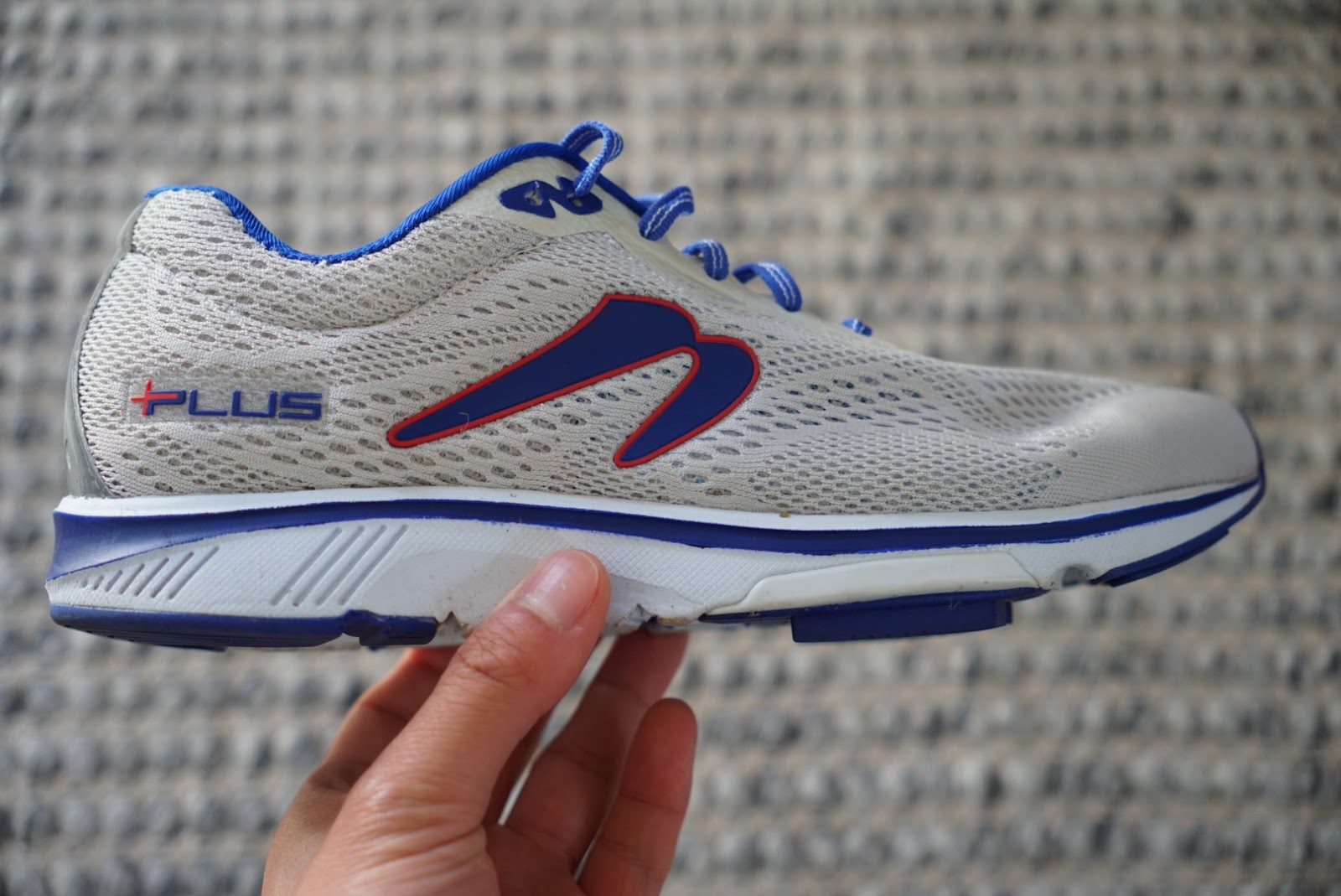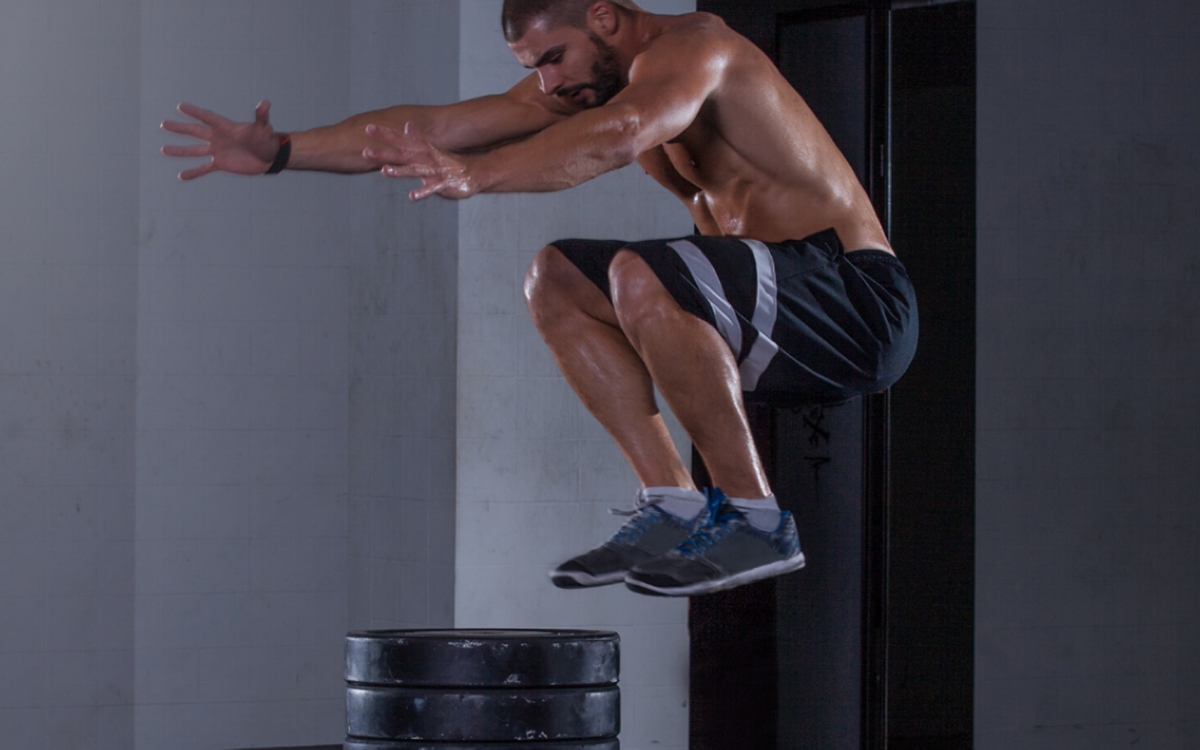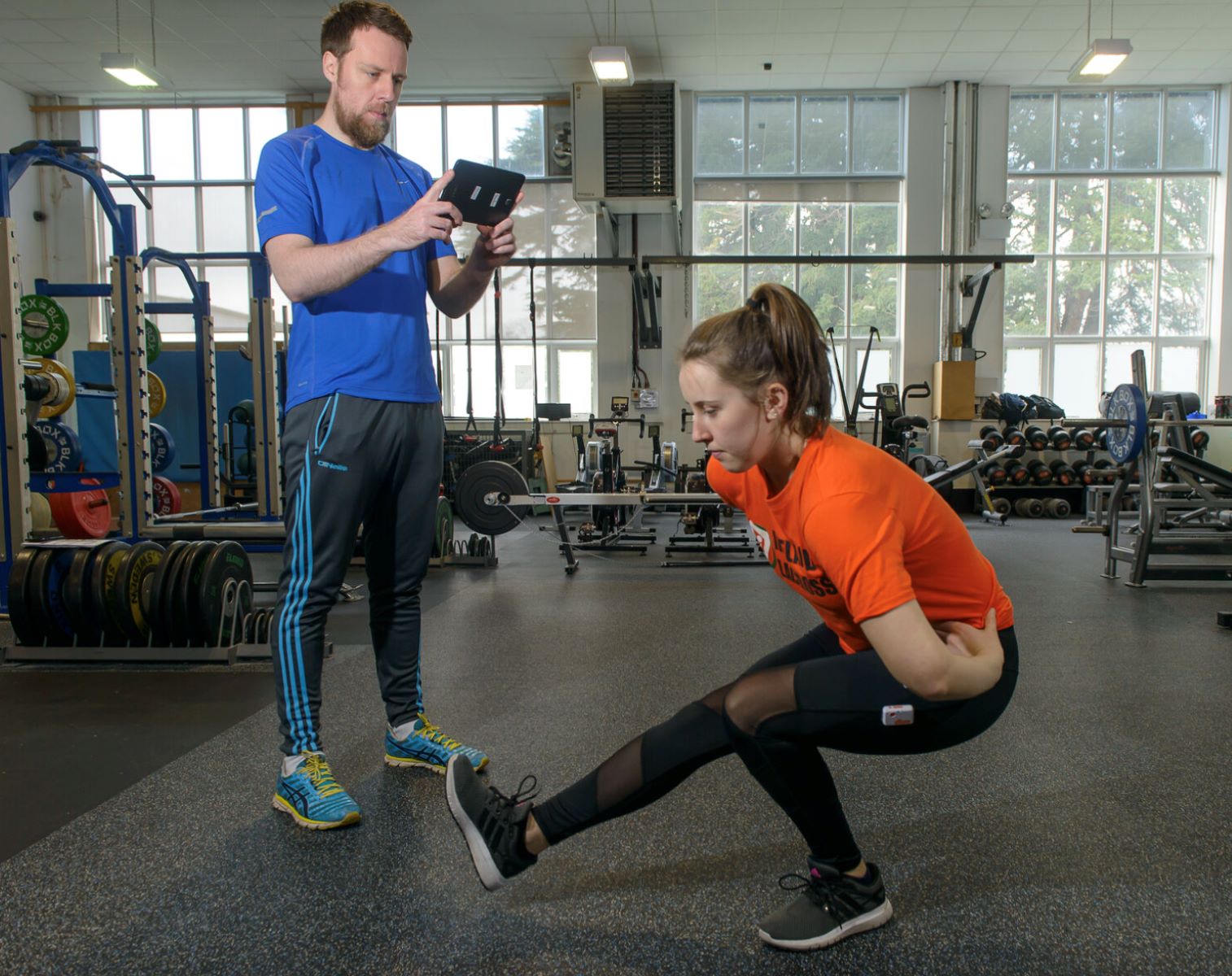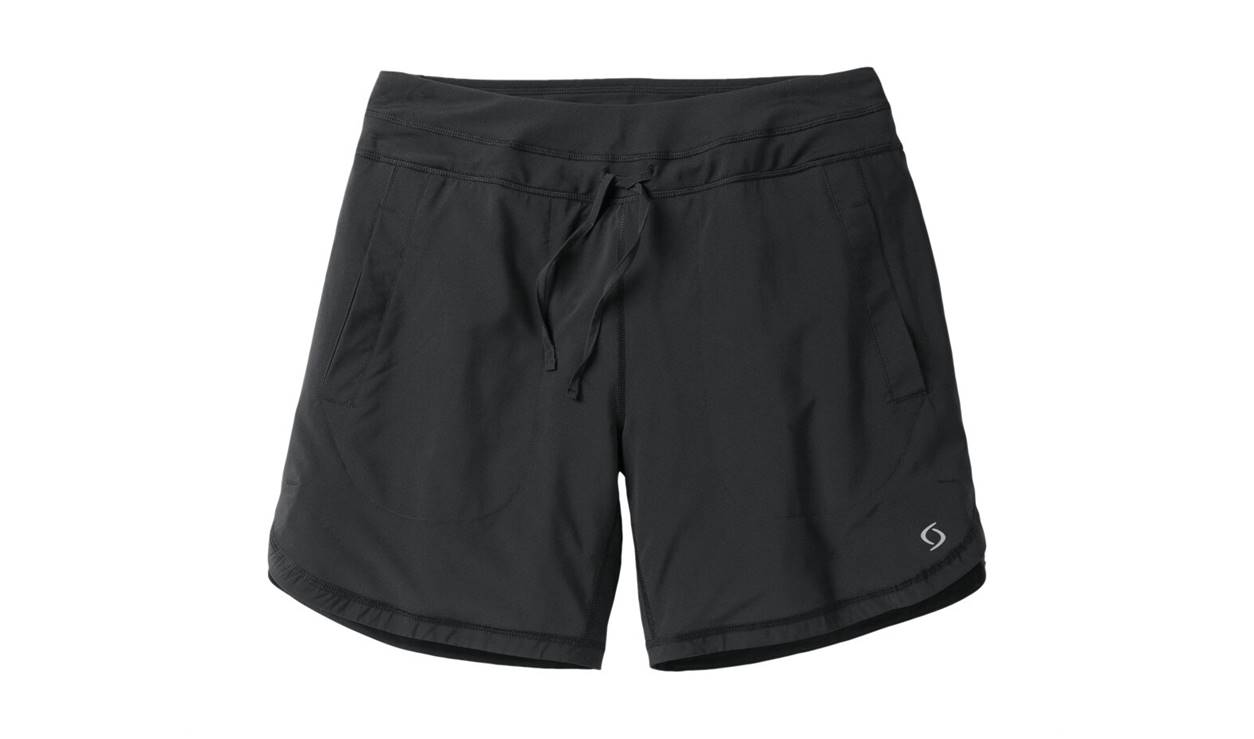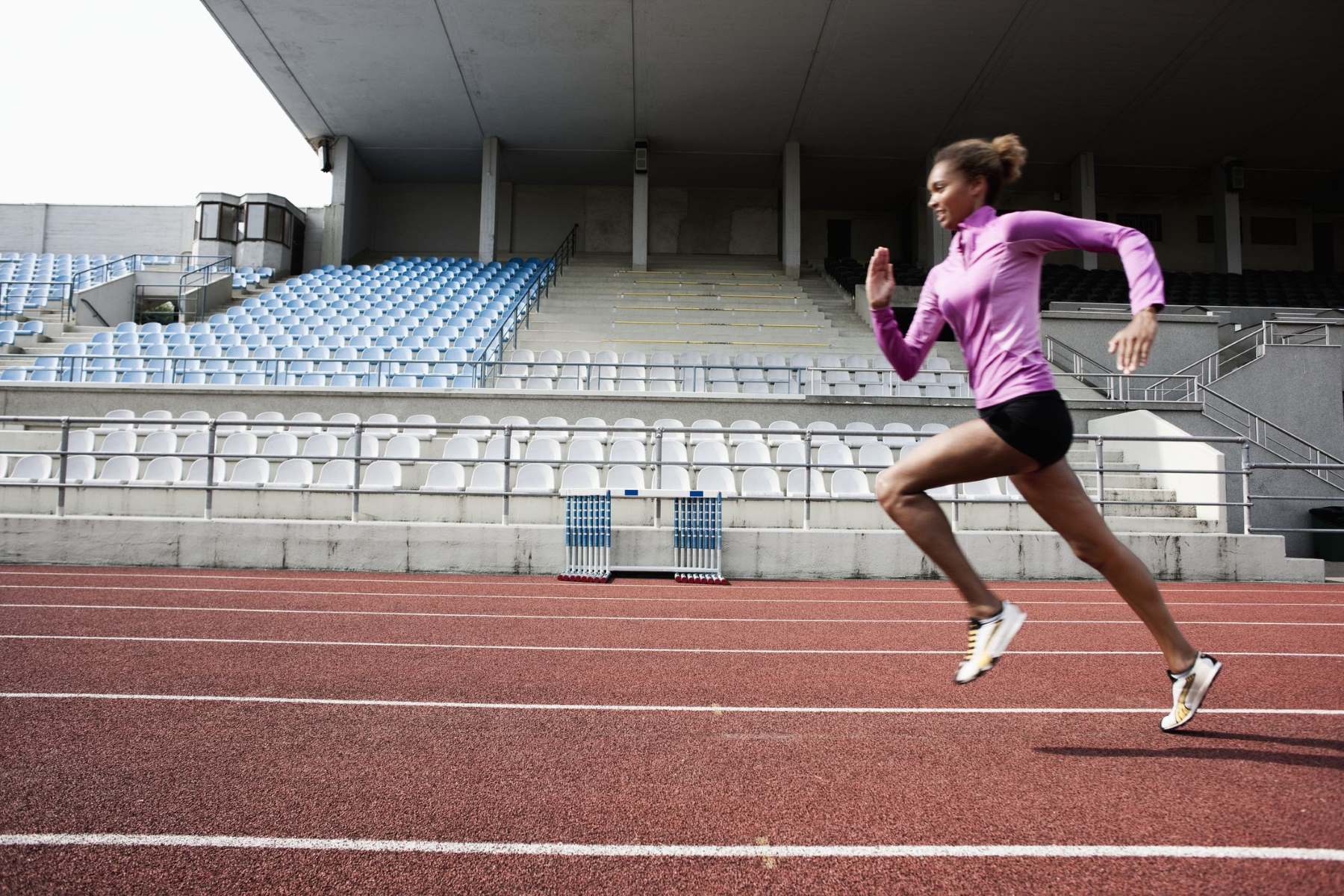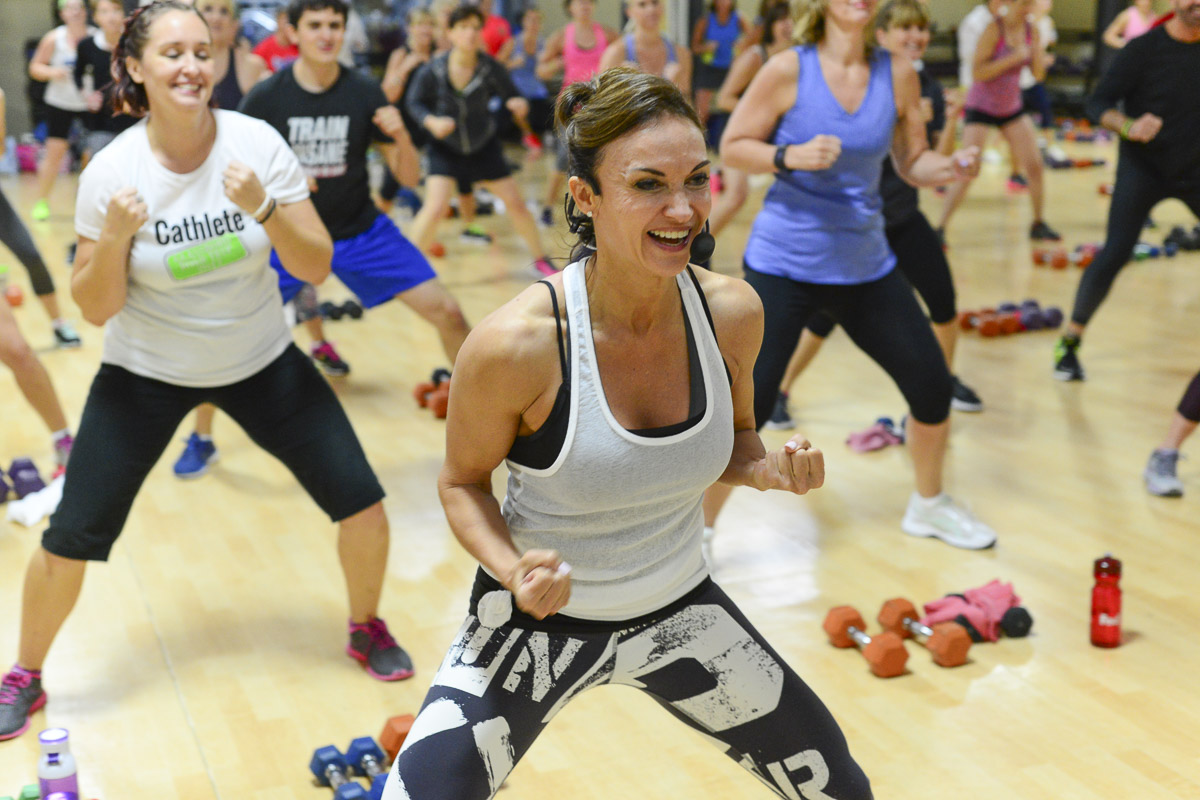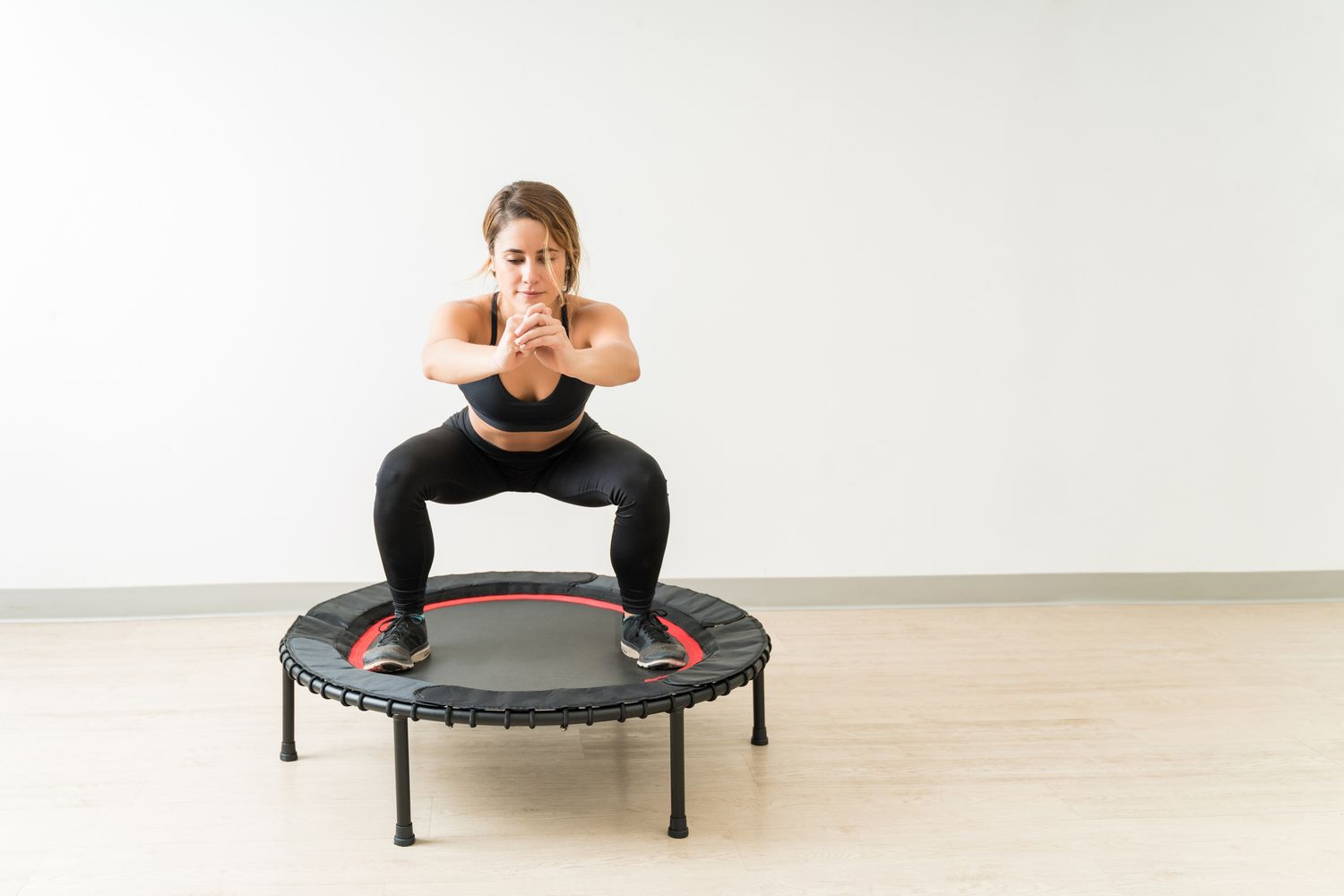

Featured
What Is Rebounding Exercise
Published: September 28, 2023
Discover the benefits of featured rebounding exercise and how it can improve your fitness level while being a low-impact workout option.
Introduction
Rebounding exercise, also known as rebounding, is a fun and effective way to improve your fitness and overall well-being. This low-impact exercise involves jumping on a mini trampoline, known as a rebounder, which provides numerous health benefits. Rebounding exercise has gained popularity in recent years due to its versatility and accessibility for people of all ages and fitness levels.
Unlike traditional cardio exercises like running or jumping rope, rebounding puts less strain on your joints and ligaments. The bouncing motion helps to improve lymphatic flow, stimulates the muscles, and increases blood circulation throughout the body. This not only strengthens the cardiovascular system but also provides a range of other health benefits, making rebounding an excellent choice for those looking for a low-impact workout.
One of the major advantages of rebounding exercise is its ability to improve balance, coordination, and core strength. The act of jumping and stabilizing yourself on the trampoline engages the muscles in your legs, core, and back, helping to enhance muscle tone and stability. Additionally, rebounding can improve bone density, making it an effective exercise for preventing osteoporosis.
Besides the physical benefits, rebounding also offers mental health advantages. The rhythmic bouncing motion releases endorphins, the body’s natural mood-boosting hormones, which can help reduce stress, anxiety, and improve overall mental well-being. Moreover, rebounding is a great stress reliever, allowing you to escape from your daily routine and have a little fun.
Whether you’re a fitness enthusiast looking to add variety to your routine or someone seeking a low-impact exercise option, rebounding is a fantastic choice. In the following sections, we will explore the various benefits of rebounding exercise, how to do it correctly, and important safety precautions to keep in mind. So, grab your rebounder and get ready to bounce your way to better health!
Benefits of Rebounding Exercise
Rebounding exercise offers a wide range of benefits for both your physical and mental well-being. Let’s explore some of the key advantages:
- Cardiovascular Health: Rebounding is a great way to improve your cardiovascular fitness without putting excessive stress on your joints. The bouncing motion increases heart rate and helps in strengthening the heart muscle.
- Weight Management: Rebounding is an effective calorie-burning exercise. It can help you shed unwanted pounds and maintain a healthy weight by boosting your metabolism.
- Muscle Toning and Strength: The act of bouncing engages numerous muscle groups, including your legs, core, back, and arms. Regular rebounding can result in improved muscle tone and overall strength.
- Bone Density: Rebounding is classified as a weight-bearing exercise, which is crucial for maintaining strong bones and reducing the risk of osteoporosis. The impact from jumping helps stimulate bone growth and increase bone density.
- Lymphatic Drainage: Rebounding stimulates lymphatic flow, which is responsible for eliminating toxins and waste from the body. Improved lymphatic circulation enhances the immune system, leading to better overall health.
- Better Balance and Coordination: Regular rebounding helps improve balance and coordination by challenging the body’s stability on the trampoline’s surface. This can be particularly beneficial for older adults in reducing the risk of falls and improving overall mobility.
- Stress Relief and Mental Well-being: Rebounding releases endorphins, which are known as natural mood boosters. This can help reduce stress, anxiety, and improve overall mental well-being. Bouncing also provides a fun and energetic outlet to release tension and improve mood.
- Improved Digestion: The gentle bouncing movements can aid in improving digestion by stimulating the muscles around the digestive tract. This can help alleviate common digestive issues, such as constipation.
These are just a few of the many benefits of rebounding exercise. Incorporating rebounding into your fitness routine can have a positive impact on your overall health and well-being. Whether you’re looking to improve your cardiovascular fitness, tone your muscles, or reduce stress, rebounding offers a multitude of advantages.
How to Do Rebounding Exercise
Rebounding exercise is simple and can be done in the comfort of your own home. Here are some steps to get started:
- Choose the Right Rebounder: Select a high-quality rebounder that is appropriate for your weight and fitness level. Look for one with sturdy construction and ample bounce.
- Warm Up: Start with a few minutes of light stretching and warm-up exercises to prepare your body for the workout.
- Find a Suitable Space: Clear a safe and open area to place your rebounder. Ensure that there is enough overhead clearance and no obstacles nearby.
- Step onto the Rebounder: Position yourself on the rebounder with your feet hip-width apart and your knees slightly bent. Keep your back straight and engage your core muscles.
- Bounce with Control: Begin by gently bouncing up and down, allowing the rebounder’s surface to propel you up. Keep your movements controlled and maintain your balance as you bounce.
- Add Variety: Explore different exercises on the rebounder, such as high knees, jumping jacks, or squat jumps, to target different muscle groups and add variety to your workout.
- Gradually Increase Intensity: As you become more comfortable, gradually increase the intensity and duration of your rebounding sessions. You can incorporate intervals of high-intensity bouncing or try more advanced moves.
- Cool Down: Finish your workout with a few minutes of gentle bouncing or stretching exercises to help your body cool down and prevent muscle soreness.
- Stay Consistent: Aim for at least 20-30 minutes of rebounding exercise most days of the week to reap the full benefits of this form of exercise.
Remember to listen to your body and adjust the intensity of your rebounding workout as needed. If you have any pre-existing medical conditions or concerns, it’s always a good idea to consult with your healthcare provider before starting a new exercise routine.
By following these simple guidelines, you can safely and effectively incorporate rebounding exercise into your fitness regimen and enjoy the many advantages it offers.
Safety Precautions
While rebounding exercise is generally safe and low-impact, it’s important to follow these safety precautions to minimize the risk of injury:
- Check the Equipment: Before each rebounding session, inspect your rebounder for any damage or wear and tear. Ensure that the springs and frame are intact and secure.
- Wear Proper Footwear: Use athletic shoes with good support and grip to prevent slipping or foot injuries while bouncing.
- Start Slowly: If you’re new to rebounding, begin with shorter sessions and gradually increase the duration and intensity over time. This allows your body to adapt to the exercise.
- Maintain Proper Form: Keep your knees slightly bent, engage your core, and avoid locking your joints. Maintain a neutral spine and avoid excessive bouncing, which can strain your joints.
- Stay Hydrated: Drink plenty of water before, during, and after your workout to stay hydrated and prevent overheating.
- Listen to Your Body: If you experience pain, dizziness, shortness of breath, or any discomfort, stop exercising and consult a healthcare professional.
- Choose a Stable Surface: Ensure that your rebounder is placed on a stable and level surface to prevent tipping or sliding during your workout.
- Clear the Area: Remove any objects or obstacles around the rebounder to prevent tripping or accidents while exercising.
- Avoid Overexertion: While it’s important to challenge yourself, avoid pushing your body beyond its limits. Take breaks as needed and gradually progress your workout intensity.
- Follow Age and Weight Guidelines: Be aware of the manufacturer’s age and weight recommendations for the specific rebounder you are using.
By following these safety precautions, you can enjoy a safe and effective rebounding workout. It’s always wise to consult with a healthcare professional before starting any new exercise program, especially if you have any underlying health conditions or concerns.
Remember, your health and safety should always be the top priority, even when engaging in low-impact exercises like rebounding.
Choosing the Right Rebounder
When it comes to rebounding, selecting the right rebounder is essential to ensure a safe and effective workout. Here are some factors to consider when choosing a rebounder:
- Size and Weight Capacity: Consider the size and weight capacity of the rebounder. Ensure that it is appropriate for your height, weight, and fitness level to provide stability and support during your workouts.
- Build Quality: Look for a rebounder with a sturdy frame and durable springs or bungee cords. A well-constructed rebounder will allow for smooth and controlled bouncing without the risk of the frame bending or breaking.
- Surface Area: Opt for a rebounder with a sufficient surface area to accommodate your range of motion during exercises. A larger surface area provides more room to move comfortably and reduces the risk of accidentally stepping off the rebounder.
- Bounce and Rebound: The rebound capability of the trampoline is crucial for a great rebounding experience. Look for rebounders that offer a consistent and responsive bounce to maximize the benefits of the exercise.
- Stability and Balance: Ensure that the rebounder is equipped with stabilizing legs or a solid base to prevent wobbling or tipping during vigorous workouts. This will help maintain your balance and stability throughout your exercise sessions.
- Portability and Storage: If you have limited space, consider a rebounder that is lightweight and easily foldable for convenient storage. Portability can also be beneficial if you plan on taking your rebounder with you while traveling.
- Customer Reviews and Ratings: Read reviews and ratings of different rebounder models to gain insights into the experiences of other users. This can provide valuable information regarding the quality, durability, and overall performance of the rebounder.
- Budget: Determine your budget range and find a rebounder that meets your requirements while staying within your financial means. It is essential to invest in a quality rebounder that will last and provide a safe workout experience.
Remember, choosing the right rebounder can greatly enhance your rebounding exercise routine. It is advisable to do thorough research and consider your specific needs and preferences before making a purchase.
By selecting a rebounder that suits you, you can ensure optimal safety, comfort, and enjoyment during your rebounding workouts.
Different Types of Rebounding Exercises
Rebounding exercises offer a wide range of variations to keep your workouts engaging and challenging. Here are some different types of rebounding exercises you can incorporate into your routine:
- Basic Bounce: This is the foundation of rebounding exercises. Start with a gentle up and down bouncing motion, landing softly on the rebounder’s surface with your knees slightly bent.
- Jumping Jacks: Perform jumping jacks on the rebounder by starting with your feet together, then jumping up and extending your arms and legs outwards. Repeat the motion, landing softly in a controlled manner.
- High Knees: Lift your knees towards your chest as high as possible while bouncing. Alternate between lifting your right knee and left knee, engaging your core and maintaining balance throughout.
- Interval Training: Incorporate intervals of high-intensity bouncing followed by periods of lower intensity recovery. For example, perform 30 seconds of fast and intense bouncing, followed by 30 seconds of slower bouncing or marching in place.
- Squat Jumps: Begin with your feet shoulder-width apart, lower into a squat position, and explode upwards into a jump. Land softly with your knees slightly bent, then repeat the movement.
- Twists: Engage your core by twisting your upper body from side to side while bouncing. You can extend your arms outwards or hold a medicine ball for an added challenge.
- Push-ups and Planks: Utilize the rebounder to perform modified push-ups or planks. Place your hands on the rebounder while keeping your body in a straight line, engaging your core and upper body muscles.
- Leg Lifts: Sit on the rebounder and extend your legs straight out in front of you. Lift one leg at a time or both legs simultaneously, engaging your abdominal muscles.
- Dance-inspired Moves: Get creative by adding dance-inspired moves to your rebounding routine. Incorporate moves like twists, grapevines, and even small jumps with arm movements.
- Stretching and Cool Down: Finish your rebounding session with gentle stretches to cool down your body and promote flexibility. Focus on stretching your legs, back, and shoulders.
These are just a few examples of the many rebounding exercises available. Feel free to experiment and customize your routine to suit your preferences and fitness goals. You can also find rebounding workout videos or join rebounding classes for more guided and structured exercise programs.
Remember to listen to your body, start slowly, and gradually increase the intensity and duration of your rebounding exercises for the best results.
Frequently Asked Questions (FAQs)
-
Is rebounding suitable for all fitness levels?
Yes, rebounding is suitable for people of all fitness levels. It provides a low-impact workout that can be adapted to individual abilities. Beginners can start with gentle bouncing and gradually increase intensity as their fitness improves. If you have any health concerns or pre-existing conditions, it’s always best to consult with your healthcare provider before starting a rebounding exercise routine.
-
How often should I do rebounding exercise?
The frequency of your rebounding workouts depends on your fitness goals and overall health. For general health and fitness, aim for at least 3-5 sessions per week. Each session should last 20-30 minutes. If weight loss is your goal, you may consider increasing the frequency or duration of your rebounding sessions. Remember to listen to your body and allow for adequate rest and recovery between workouts.
-
Can rebounding help with weight loss?
Yes, rebounding can aid in weight loss. It is an effective cardiovascular exercise that boosts metabolism and burns calories. The bouncing motion engages multiple muscle groups, helping to build lean muscle, which in turn increases metabolic rate. To achieve weight loss, combine regular rebounding workouts with a healthy and balanced diet.
-
Can rebounding help with cellulite reduction?
While rebounding alone cannot guarantee cellulite reduction, it can contribute to improving the appearance of cellulite. The bouncing motion helps to stimulate blood flow and lymphatic circulation, which can reduce the buildup of toxins and fluid retention in the body. Regular rebounding, when combined with a healthy lifestyle, can help improve skin tone and reduce the appearance of cellulite.
-
Can rebounding be done during pregnancy?
Rebounding can be a safe and effective exercise during pregnancy, provided that you have approval from your healthcare provider. It is generally advised to modify and avoid high-impact movements, such as jumping, to minimize the risk of falls or impacts to the abdomen. Consider using a rebounder with a stability bar for added support and adopt lower-impact movements like gentle bouncing or marching in place. Always prioritize your safety and comfort, and consult with your healthcare provider for personalized guidance.
These are just a few frequently asked questions about rebounding exercise. If you have any additional concerns or queries, it’s always best to consult with a fitness professional or healthcare provider who can provide personalized advice based on your specific needs and circumstances.
Conclusion
Rebounding exercise offers a fun and effective way to improve your fitness, strengthen your muscles, enhance your cardiovascular health, and boost your overall well-being. With its low-impact nature and versatility, rebounding is suitable for people of all ages and fitness levels. Whether you’re a beginner looking to start a new exercise routine or a fitness enthusiast searching for a way to diversify your workouts, rebounding can be a fantastic choice.
By incorporating rebounding into your fitness regimen, you can experience numerous benefits, including improved cardiovascular fitness, enhanced muscle strength and tone, better balance and coordination, increased metabolism, and reduced stress levels. Additionally, rebounding is gentle on the joints, making it an excellent option for those seeking low-impact cardio exercises.
When getting started with rebounding, it’s essential to choose the right rebounder, follow proper technique, and prioritize safety by adhering to precautions. Gradually increase the intensity and duration of your workouts to challenge your body and achieve your fitness goals.
Remember to listen to your body, stay consistent with your rebounding routine, and enjoy the process. With dedication and perseverance, rebounding can become a fulfilling and enjoyable part of your fitness journey.
So, grab a rebounder, put on some energizing music, and bounce your way to improved health and fitness!

